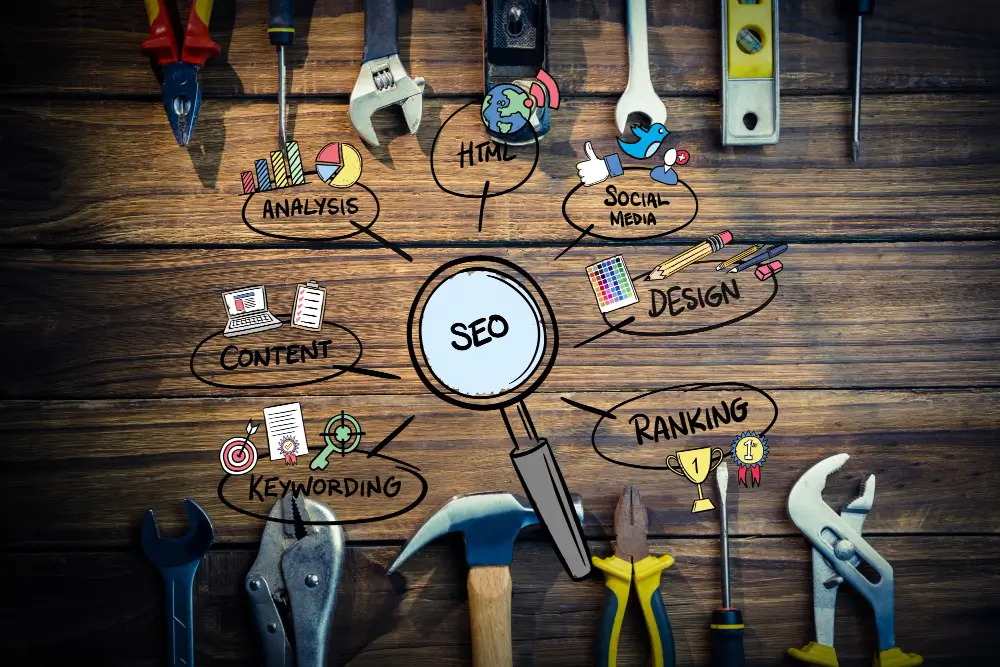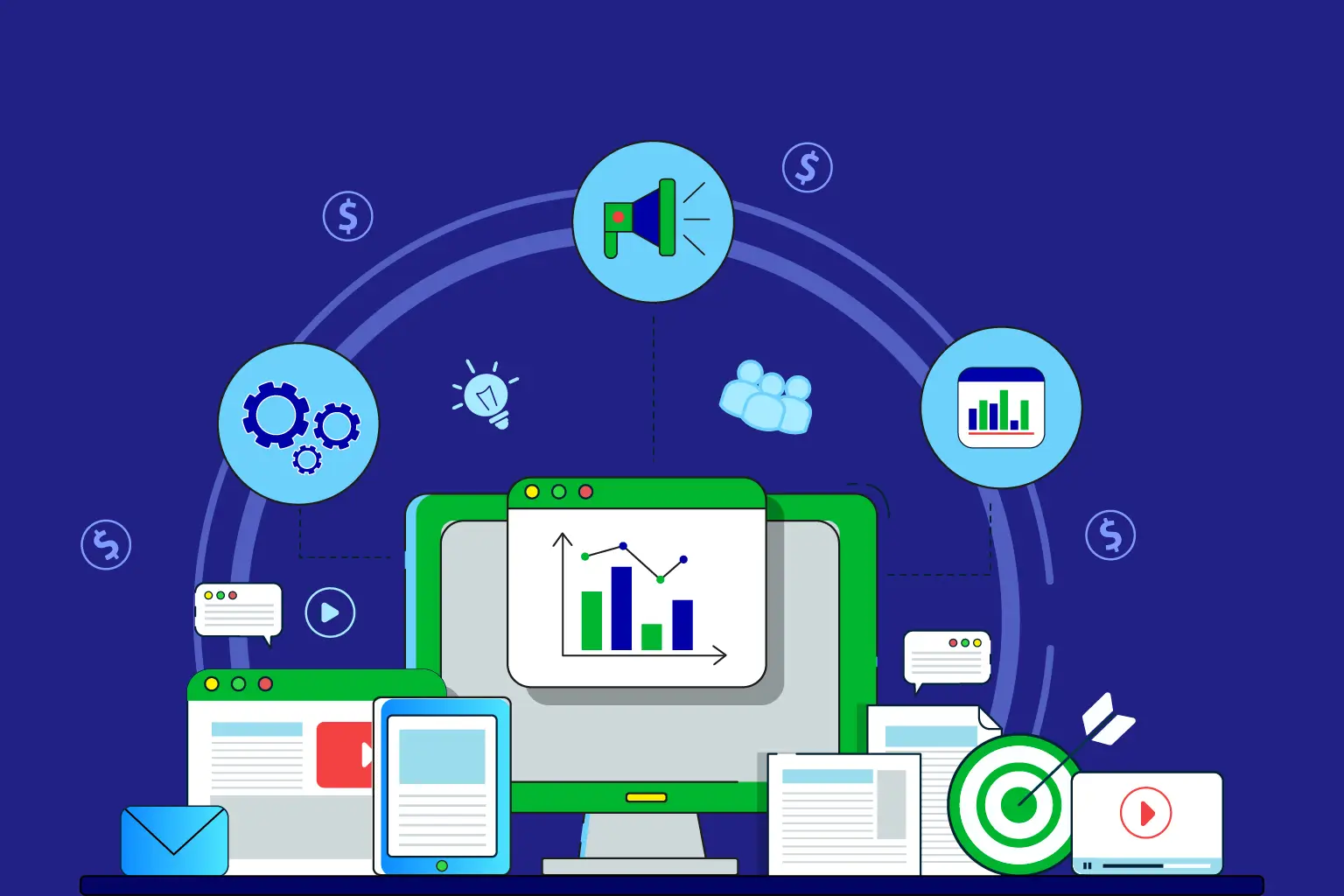Introduction
Welcome to our ultimate guide on mastering SEO tips and tricks for content optimization strategies. In today’s dynamic digital landscape, employing effective search engine optimization techniques is essential for enhancing your website’s visibility and attracting organic traffic. With our expertly curated tips, you’ll learn how to elevate your online presence and engage your target audience effectively. Take control of your website’s performance and unlock its full potential with these indispensable SEO strategies.
At the core of SEO success lies a firm grasp of its fundamental principles. Keywords, for instance, serve as the backbone of content optimization. By conducting meticulous keyword research and seamlessly integrating them throughout your content, you can bolster your search engine rankings and attract a wider audience. Moreover, crafting captivating meta descriptions and optimizing headings and subheadings are pivotal steps in enhancing user engagement and increasing click-through rates. As we delve deeper into these SEO tips and tricks, we’ll equip you with the knowledge and tools needed to propel your content to new heights of success.
Understanding SEO Basics for Content Optimization
Understanding SEO basics is essential for optimizing your content to rank higher in search engine results pages (SERPs). SEO, or search engine optimization, is the process of improving your website’s visibility and relevance to attract more organic traffic. By implementing SEO tips and tricks, you can increase your chances of reaching a wider audience and achieving your content marketing goals.
Firstly, it’s crucial to conduct keyword research to identify the terms and phrases your target audience is searching for. Next, incorporate these keywords naturally throughout your content, including in titles, headings, and body paragraphs. Additionally, optimizing meta descriptions with relevant keywords can improve click-through rates.
Moreover, structuring your content with clear headings and subheadings not only enhances readability but also helps search engines understand the context of your content. Furthermore, utilizing internal links to connect related pages within your website can improve navigation and boost SEO performance.
Lastly, regularly monitoring and analyzing SEO metrics like traffic, bounce rate, and keyword rankings can provide valuable insights for refining your content optimization strategy. By mastering these SEO basics and implementing effective tips and tricks, you can fine-tune your content for better visibility and engagement.
Choosing Relevant Keywords for Improved Visibility
When fine-tuning your content with SEO tips and tricks, choosing relevant keywords plays a pivotal role in boosting visibility and driving traffic to your website. Keywords are the backbone of any SEO strategy, guiding search engines to understand the context and relevance of your content.
Begin by brainstorming potential keywords related to your topic, considering terms that your target audience is likely to search for. Then, utilize tools like Google Keyword Planner or SEMrush to further refine your keyword selection based on search volume and competition.
Incorporate these keywords naturally throughout your content, ensuring they seamlessly fit within the context of your writing. By strategically placing keywords in your titles, headings, and body content, you can signal to search engines the relevance of your content to user queries.
Remember, striking a balance between keyword optimization and readability is key to maintaining a user-friendly experience. So, take your time and choose your keywords wisely to improve visibility and attract more organic traffic to your website.
Crafting Compelling Meta Descriptions to Attract Clicks
Crafting compelling meta descriptions is a crucial aspect of SEO Tips and Tricks for optimizing your content. These brief snippets serve as a window into your webpage, enticing users to click through to your site. By incorporating relevant keywords and showcasing the value of your content, you can attract more clicks and improve your search engine rankings.
When crafting meta descriptions, it’s important to keep them concise and engaging. Use active language and highlight the benefits of visiting your page. Consider posing a question or teasing the content to pique the reader’s curiosity and encourage them to learn more.
Additionally, make sure your meta descriptions align with the content of your webpage to maintain relevance and credibility. Avoid misleading or exaggerated descriptions, as this can lead to a negative user experience and harm your SEO efforts.
Finally, regularly monitor the performance of your meta descriptions and make adjustments as needed. Analyze click-through rates and experiment with different wording and strategies to find what resonates best with your audience. With careful crafting and optimization, compelling meta descriptions can significantly enhance your content’s visibility and drive more traffic to your website.
Optimizing Headings and Subheadings for Readability
When fine-tuning your content with SEO tips and tricks, one crucial aspect to focus on is optimizing headings and subheadings for readability. This not only aids search engines in understanding your content but also enhances the overall user experience. Firstly, incorporating relevant keywords into your headings and subheadings is paramount. This signals to search engines the main topics covered in your content, improving its chances of ranking higher in search results. By using active voice sentences, you ensure clarity and directness, making it easier for both search engines and readers to grasp the essence of your content.
Moreover, keeping your headings and subheadings concise and descriptive is equally important. Clear headings enable readers to quickly scan through your content and find what they’re looking for, enhancing user satisfaction. Furthermore, organizing your content with well-structured headings and subheadings makes it more accessible and digestible. This not only guides readers through your content but also helps search engines index your pages more effectively, boosting your overall SEO efforts.
Additionally, incorporating variations of your target keywords into subheadings can further optimize your content for search engines. This strategy increases the likelihood of your content being discovered by users searching for related topics. By diversifying your keyword usage in headings and subheadings, you expand the reach of your content and attract a broader audience. Overall, optimizing headings and subheadings plays a vital role in maximizing the readability and search engine visibility of your content.
Optimizing headings and subheadings is an essential component of effective SEO strategies. By incorporating relevant keywords, keeping headings concise and descriptive, and organizing content effectively, you can enhance both user experience and search engine ranking. Remember to continually refine and tweak your headings and subheadings to ensure they align with the latest SEO best practices and resonate with your target audience.
Incorporating Internal Links to Boost SEO Performance
When it comes to fine-tuning your content with SEO tips and tricks, incorporating internal links is a game-changer. Not only does it enhance user experience by guiding them to relevant content, but it also works wonders for SEO performance. Let’s delve into this strategy a bit deeper.
Firstly, internal links connect different pages within your website, allowing search engines to crawl and index your content more effectively. By strategically placing links to other relevant pages within your content, you’re signaling to search engines that your website is a comprehensive resource on the topic.
Moreover, internal links distribute the authority and ranking power throughout your website, boosting the visibility of all your pages in search results. So, when users land on one of your pages, they’re encouraged to explore further by clicking on internal links.
In addition to that, incorporating internal links can also reduce your website’s bounce rate by keeping visitors engaged and exploring your site. So, next time you’re optimizing your content for SEO, don’t forget to leverage the power of internal links.
Enhancing User Experience for Higher Engagement Rates
Improving user experience is not just about making your website look pretty; it’s also a crucial aspect of SEO. When users have a positive experience on your site, they’re more likely to stay longer, engage with your content, and ultimately, boost your SEO performance.
Firstly, ensure your website is mobile-friendly. With more and more users accessing the internet on their smartphones, having a responsive design is essential for SEO success. Secondly, focus on page load speed. Nobody likes waiting around for a slow website to load, and search engines penalize sites with high loading times.
Thirdly, organize your content logically and use clear navigation menus to help users find what they’re looking for quickly and easily. By enhancing user experience, you not only keep visitors happy but also improve your chances of ranking higher in search engine results pages.
So, don’t forget to prioritize user experience as part of your SEO strategy. With attention to mobile responsiveness, page load speed, and intuitive navigation, you can create a seamless browsing experience that keeps visitors engaged and coming back for more.
Leveraging Multimedia Content for SEO Benefits
Leveraging multimedia content can significantly enhance your SEO efforts, making your content more engaging and appealing to both users and search engines. When users encounter a webpage with visually appealing elements like images, videos, or infographics, they are more likely to stay longer on the page, reducing bounce rates and sending positive signals to search engines. This increased dwell time can indicate to search engines that your content is valuable and relevant, potentially improving your rankings.
Furthermore, multimedia content provides additional opportunities to include relevant keywords and metadata, further optimizing your pages for search engine visibility. By adding descriptive alt text to images and captions to videos, you can provide search engines with more context about your content, helping them understand its relevance to user queries. This, in turn, can lead to higher rankings in search engine results pages (SERPs) for relevant keywords and phrases.
Additionally, multimedia elements are often shared more frequently on social media platforms, helping to increase your content’s reach and drive more traffic to your site. When users share your multimedia content on platforms like Facebook, Twitter, or Instagram, they are essentially endorsing your content to their followers, expanding your audience and potentially attracting more backlinks. These social signals are increasingly important to search engines, as they indicate that your content is valuable and worthy of attention.
Incorporating multimedia content into your SEO strategy can have a significant impact on your overall search engine rankings and visibility. By creating visually appealing and informative images, videos, and infographics, you can engage users, improve dwell time, and increase social shares, all of which contribute to better SEO performance. So, when fine-tuning your content with SEO tips and tricks, be sure to prioritize the inclusion of multimedia elements to maximize your results and drive more organic traffic to your site.
Monitoring and Analyzing SEO Performance Metrics
Monitoring and analyzing SEO performance metrics is an indispensable aspect of refining your content strategy. Regularly reviewing key indicators allows you to identify areas for improvement and track the effectiveness of your SEO efforts. By staying informed about metrics such as organic traffic, keyword rankings, and click-through rates, you can gauge your content’s visibility and engagement levels. These insights serve as valuable guideposts, helping you make informed decisions about where to allocate your resources and efforts.
Delving deeper into more granular data offers additional insights into how visitors interact with your content. Metrics like bounce rates, time on page, and conversion rates provide valuable feedback on the effectiveness of your content in retaining audience attention and driving desired actions. Analyzing this data allows you to pinpoint strengths and weaknesses in your content strategy, enabling you to make data-driven optimizations for better results.
Leveraging insights from tools like Google Analytics and Search Console provides further opportunities for refining your approach. These platforms offer comprehensive data and actionable insights into user behavior, site performance, and search engine visibility. By harnessing these tools, you can uncover valuable trends and patterns, identify emerging opportunities, and address potential issues before they impact your SEO performance.
Consistent monitoring and analysis of SEO metrics are essential for staying ahead in the dynamic landscape of digital marketing. By applying these insights and making data-driven optimizations, you can drive sustainable growth and achieve long-term success with your content. Keep refining your strategy based on the feedback provided by these metrics, and you’ll be well-positioned to maximize your content’s impact and reach.
Implementing Schema Markup for Enhanced Search Results
Implementing Schema Markup for Enhanced Search Results is a crucial aspect of SEO Tips and Tricks. Schema markup provides search engines with structured data about your content, helping them understand its context and relevance. By adding schema markup to your website, you can enhance your search engine visibility and attract more organic traffic.
Firstly, schema markup allows search engines to display rich snippets in search results, providing users with more detailed information about your content. Secondly, it helps search engines identify key elements of your content, such as product reviews, recipes, events, and FAQs.
Moreover, schema markup can improve the click-through rate of your search results by making them more visually appealing and informative. By providing search engines with structured data, you make it easier for them to understand the content and its relevance to users’ search queries.
Lastly, implementing schema markup is relatively simple and can have a significant impact on your SEO efforts. By taking advantage of this powerful tool, you can fine-tune your content and enhance your search engine rankings.
Staying Updated with SEO Trends and Algorithm Changes
Staying updated with SEO trends and algorithm changes is paramount in today’s digital landscape. Search engines like Google regularly refine their algorithms to deliver the most relevant and valuable content to users. By keeping abreast of these changes, you can ensure that your content remains visible and competitive in search engine results pages (SERPs).
Constant learning and adaptation are central to effective SEO strategies. Monitoring industry blogs, attending webinars, and participating in online forums are excellent ways to stay informed about the latest developments. By staying engaged with the SEO community, you can gain valuable insights and stay ahead of the curve.
Implementing changes based on new SEO trends is essential for maintaining your website’s visibility and relevance. By incorporating relevant keywords, optimizing your website structure, and creating high-quality content, you can improve your chances of ranking higher in search results. It’s crucial to adapt your SEO tactics to align with the evolving preferences and behaviors of your target audience.
Ultimately, staying updated with SEO trends isn’t just about keeping up with the competition—it’s about providing the best possible experience for your audience. By staying informed and adapting your strategies accordingly, you can ensure that your content remains valuable, engaging, and easily discoverable by search engine users.
Conclusion
As we wrap up our journey through these SEO tips and tricks, it’s clear that mastering the art of content optimization is within your grasp. By implementing the strategies outlined, you’ll not only fine-tune your content but also enhance its visibility and reach. Remember, SEO is an ongoing process, so don’t hesitate to experiment, analyze, and refine your approach. With each tweak and adjustment, your content will inch closer to the top of search engine results pages. Here’s to your continued success with SEO tips and tricks!



















